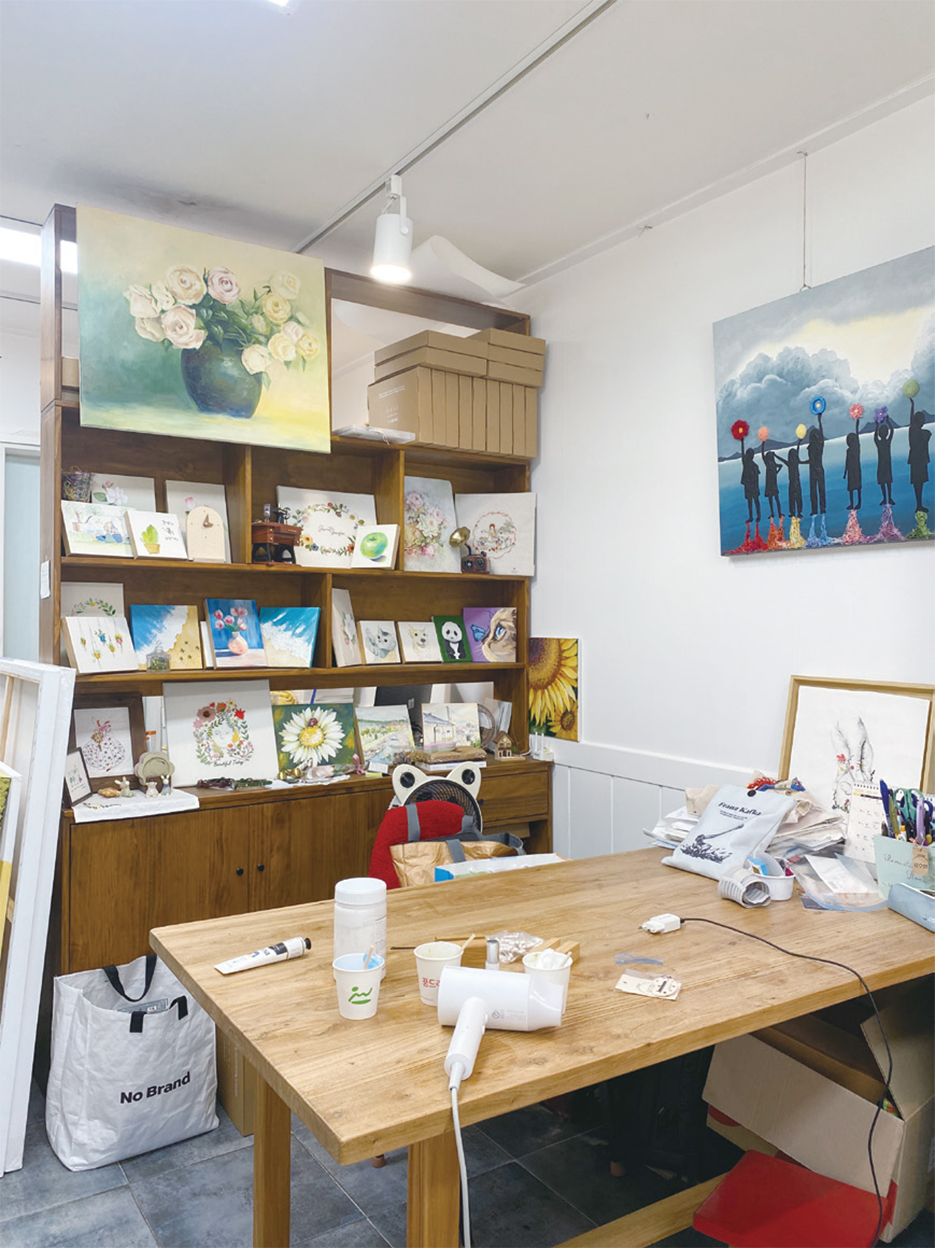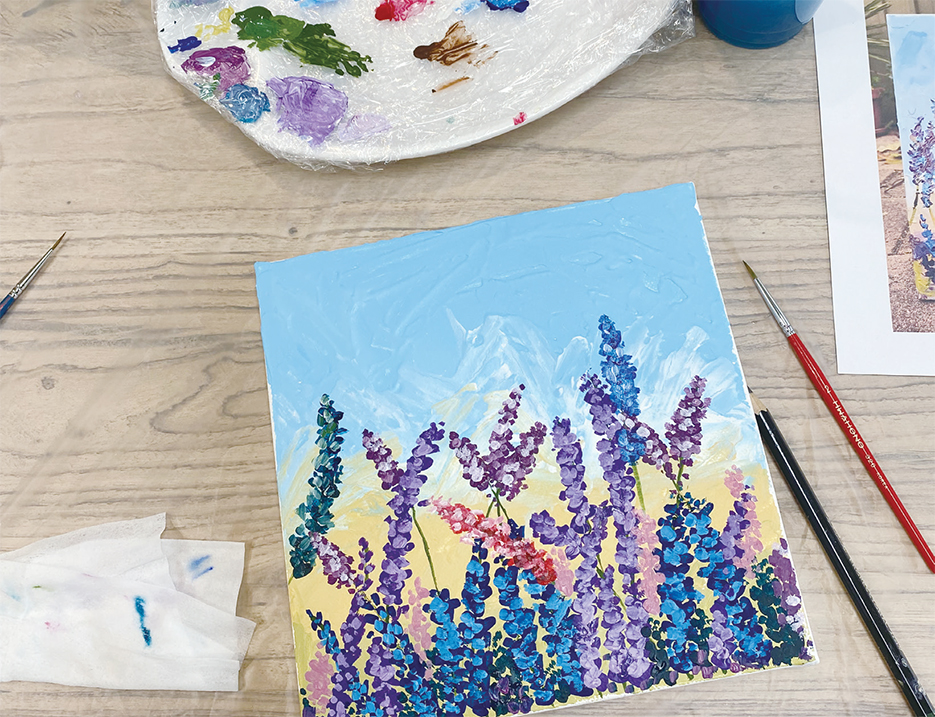
Art, Another Language of Healing
Recent psychological studies continue to show that engaging in art activities can help reduce stress and encourage self-expression. The American Art Therapy Association reports that, “Expressing emotions through colors and shapes helps lower levels of cortisol, the hormone responsible for stress.”
In Korea, a 2023 report by Seoul National University’s Institute of Human Ecology revealed that 78% of participants in art-related activities experienced a higher sense of psychological stability. Even short moments spent visualizing emotions through colors and forms stimulate the brain’s emotion-regulation areas, enhancing emotional balance and calmness.
As this perception spreads—that art can provide mental rest and emotional recovery—hands-on hobbies have gained popularity among the MZ generation in Korea. One of the most popular forms is the one-day art class.
A CBT reporter visited Hwasuwon, a small emotional art studio tucked away in the alleys of Seongan-dong, Cheongju. The studio offers one-day classes in acrylic painting, featuring thick and creamy textures reminiscent of oil paint. This “kkudeok-kkudeok sensibility” (a Korean onomatopoeic expression meaning, thick and textured) has become a rising trend on social media, capturing the MZ generation’s new approach to healing. The tactile brushstrokes and rich layers of paint provide visual satisfaction—and sharing the finished work online has become a way to record one’s emotions in color.

Entering the Warm, Emotional Space of Hwasuwon
True to its name, Hwasuwon (a garden of art and water) feels like a small and cozy garden.
Upon entering, one is greeted by the gentle hum of jazz, the scent of paint, and the warmth of soft lighting. Palettes, brushes, and jars of colorful acrylic paints are neatly arranged on each table.
The walls are lined with completed works by past participants—each distinct in tone and texture despite using the same materials. It is clearly a place where creativity flows freely, without rigid boundaries.
Kim Young-ae, an instructor, greets the class with a kind smile.
“You do not have to be good at painting,” she says reassuringly. “Just choose colors you love.” Her words immediately put participants at ease. They begin choosing shades that reflect their current mood—sometimes vibrant, sometimes muted. Even those who are usually pressed for time find that the pace here seems to slow down, letting them savor each quiet moment of creation.
Quick Drying, Deep Immersion
The signature kkudeok-kkudeok texture of acrylic paint comes from the ratio between pigment and binder (acrylic resin). A higher pigment concentration creates thicker and visible brushstrokes, while more binder produces a smooth and glossy finish.
At Hwasuwon, participants use Heavy Body acrylics, known for their rich, cream-like consistency. Some choose palette knives instead of brushes to build up paint layers, emphasizing the dense texture. Though acrylics are water-based, they become waterproof when dry—allowing beginners to correct mistakes easily before the paint sets into a rubber-like surface.
Because acrylics dry quickly, even a two-hour class is enough to complete a finished piece. This short yet transformative process enhances focus, as participants can see their progress taking shape in real time.
Immersion in Color and Texture
Each class unfolds in steps: sketching, color selection, texture application, and layering. Since acrylic dries fast, each brushstroke demands attention. As colors overlap, unexpected combinations emerge—sometimes more beautiful than planned. What once seemed a mistake often turns into a compelling texture.
Soon, conversation fades, replaced by the rhythmic sound of brushes gliding across canvas. Kim moves among the tables, offering gentle advice: “The thicker the paint, the more alive the expression becomes. Try standing your brush upright—do not be afraid of overlapping colors. Enjoy the texture formed.”
Layer by layer, the colors pile up to create a landscape. Time slips away unnoticed. The mind clears; focus narrows to the movement of the hand. Here, artistic skill does not matter—it is all about expressing one’s emotions in color.
One participant smiles, saying, “I usually cannot focus for long, but this two hour class flies by.” Kim replies, “Many people think painting is difficult, but acrylics are easy to modify. In just two hours, anyone can create a complete work. When people who call themselves terrible at art thank me afterward, it always makes me happy.” Just as she says, the class is less about results and more about the joy of the process itself.

Healing, Layer by Layer
When participants step back to view their finished works, a quiet sense of fulfillment fills the room.
Even imperfect lines and uneven colors hold personal meaning. What matters is not perfection, but the act of finishing—a visible reflection of one’s inner world.
Laughter fills the studio as participants admire one another’s work. “This one feels so warm,” “The texture is so kkudeok-kkudeok!” Their words convey mutual recognition and warmth. In just two short hours, everyone has experienced their own moment of flow. Kim notes, “While painting, people stop thinking about everything else. It naturally brings the mind into order.”
More than just a hobby, the acrylic class has become a form of artistic healing—a space for self-reflection and emotional release. Participants often remark, “It feels like I painted my own heart.” Each layer of color becomes a memory—a quiet and personal form of comfort.
Kim adds, “I plan to collaborate with other artists soon, offering themed sessions and long-term projects with stories behind them.” Along one wall, completed canvases stand on display—each a small fragment of the artist’s heart, captured in color.
Adding Colors to Everyday Life
At the end of class, participants carefully package their finished paintings to take home. Once hung on a wall, the artwork reflects light differently throughout the day, its texture shifting with the viewer’s mood. Each glance brings back the scent of paint, the gentle brushstrokes, and the calm of the studio. The piece is more than a souvenir—it is a small gift of rest to oneself.
As layers of color build up, the heart feels lighter, and the memory of that quiet afternoon remains long after the paint has dried. On days when university life feels repetitive, how about pausing and finding own color within the kkudeok-kkudeok texture? The immersion and healing discovered there, will remain vividly in one’s heart for a long time.

By Kweon Sol-min
thfals7958@chungbuk.ac.kr


 All
All Experience
Experience






 Kweon Sol-min
Kweon Sol-min











